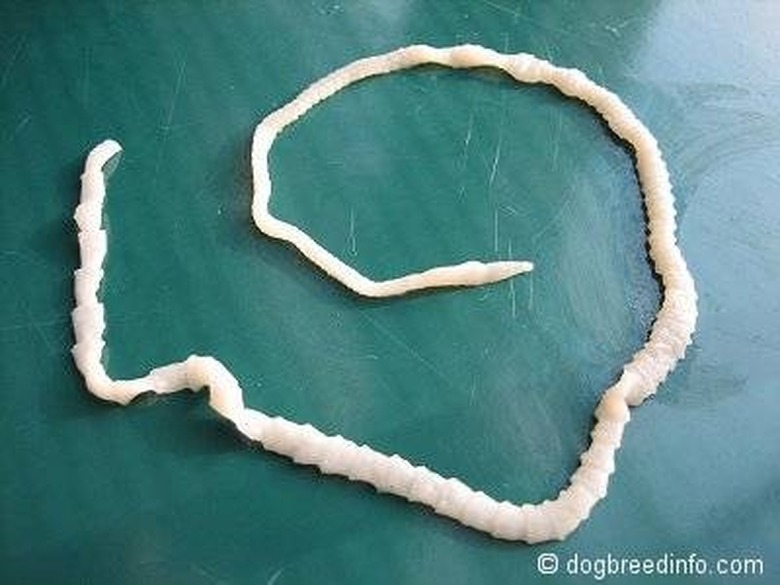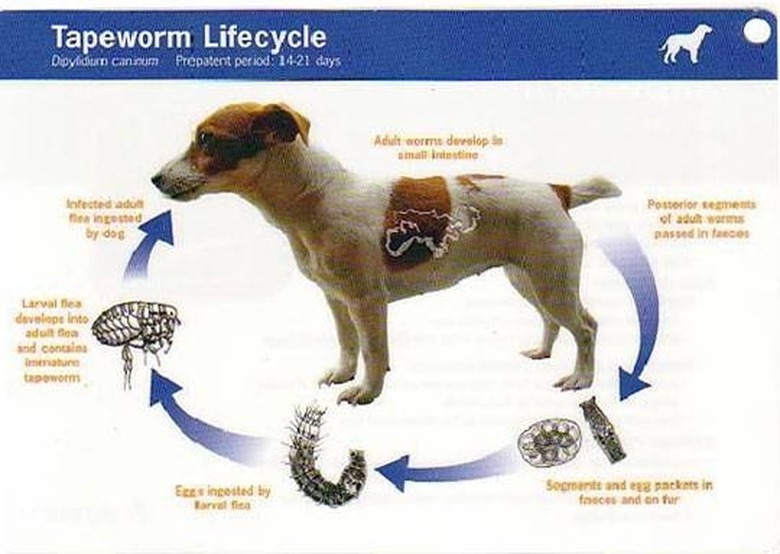Home Remedies For Tapeworms In Your Pet
Although they usually don't cause much damage to a pet's health, tapeworms are a common, often disgusting pet ailment that should not be ignored. Pet owners can often combat tapeworms with one of several methods of treatment at home. This article describes home remedies and means of administration for pets with tapeworms.
Description
Description
Tapeworm larvae use a host, such as a flea, to infest cats, dogs and other animals. The pets ingest fleas, or animals with the fleas, and the attached larvae, thus introducing the tapeworm to its new home. Tapeworms can grow to great lengths in the dog's intestines. Expelled tapeworm segments are whitish and about 1/4 inch in length. Other signs include cucumber-seed-like or rice-grain-like segments, which often cling to the pets' rear end.
Symptoms
Symptoms
The majority of tapeworm infestations go unnoticed. In more severe cases, segments of the worm are expelled from the animal's anus or are imbedded in fecal matter. Sometimes the segments appear around the animal's posterior. In some animals, a rumbling stomach, cramping, or diarrhea streaked with mucous are present. Because a tapeworm gets its sustenance by leaching off a pet's partially digested food, the pet's health may diminish. That can result in a dull or scruffy coat, weight loss, appetite loss, excessive eating, sluggishness, restlessness, vomiting, and diarrhea.
Treatment
Treatment
One of the easiest tapeworm treatments is adding garlic powder to the animal's food. Garlic's anti-microbial properties help fight and kill bacteria, infection, as well as internal parasites such as tapeworms. Garlic is safe for long-term daily use and can be applied liberally. Anecdotal evidence suggests the flavor is enjoyed by most cats. Another treatment is wormwood (artemisia absinthium), which can be administered as a tincture in small amounts. Fennel helps expel the worm from the intestine. Cloves, freshly ground white pumpkin seeds, and Oregon grape tincture seeds may also be effective.
Considerations
Considerations
Laxatives aren't effective against tapeworms and cause discomfort for the pet. That is because laxatives may cause the worm segments to be expelled, but the scolex (the head) of the worm remains attached to the interior of the intestines. Over-the-counter de-wormers function by dissolving the protective layer of the tapeworm, enabling it to be digested by a pet's intestines.
Difficulties
Difficulties
Because the eggs of tapeworms are carried by fleas, recurrences are likely unless the overall flea problem is addressed. Over-the-counter flea treatments are most effective, although daily garlic, weekly sulphur, and black walnut hulls can be added to a pet's diet to fight them as well. Herbal shampoos containing pine cedar, bergamot, rosemary, lavender, eucalyptus, citronella, juniper or geranium may also be effective.

